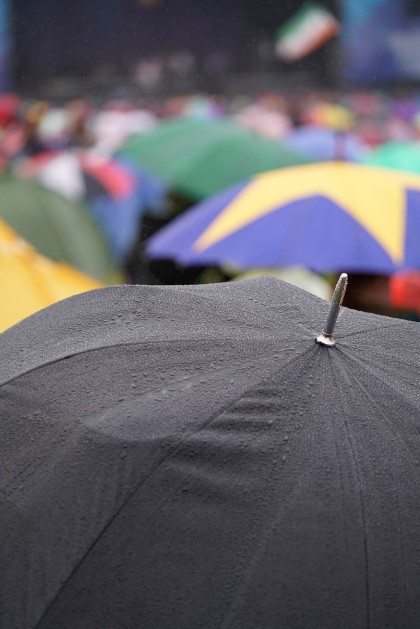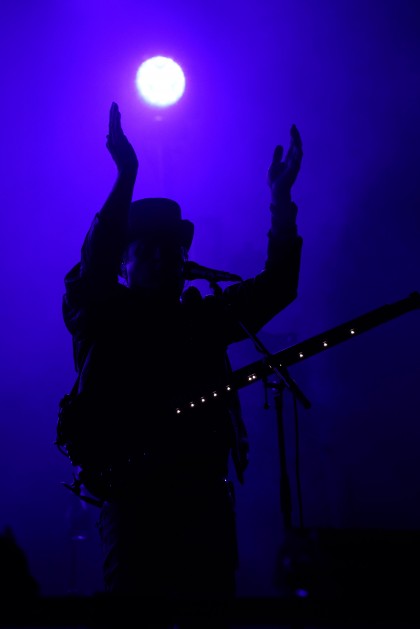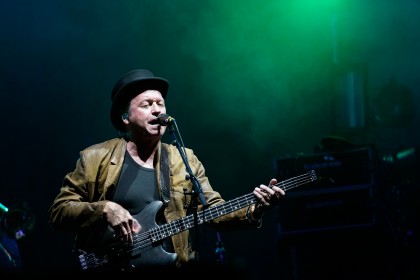Why you can trust TechRadar
One thing that's clear from both our real-world and lab tests is that the Alpha 7R II can resolve a lot of detail – but then that's the whole point of having a sensor with 42 million pixels. As you'd expect, the highest level of detail is captured at the lowest sensitivity settings, but interestingly we found it impossible to match the JPEG's in-camera processing when processing raw file images of our chart using the supplied software – the JPEGs resolve very slightly more detail.
In the lab we found that the A7R II is just about able to reach the maximum score in our resolution tests, but it doesn't out-resolve the chart, and can't quite match the 50MP Canon 5DS for detail, although that's hardly surprising given the difference in pixel count. Similarly, the A7R II is able to capture more detail than the 36MP A7R and Nikon D810.
As sensitivity is increased to mid-range values the JPEGs take on a slightly painterly appearance at 100% on-screen. This becomes even more evident at high values, with edges appearing a little harsh while the areas in between are a softer wash of colour. This makes the JPEGs look over-processed at 100%, although they look okay at normal viewing sizes.

Sample image: The A7R II is able to resolve an impressive level of detail, and the fabric of the umbrella is clearly visible in the droplets of water in this shot. You can also rely on the auto white balance and 1200-zone evaluative metering systems to deliver accurate colours and exposures even in tricky conditions – this shot could easily have looked dull and cold. Click here for a larger image.
Raw files have more granular noise present, so it's possible to create images that look more natural at 100%. Noise levels are kept within acceptable limits throughout the native sensitivity range (ISO100-25,600), but I would avoid the high expansion settings (maximum ISO 102,400) unless getting a shot is more important than its quality.
While the most obvious use for a 42MP camera is shooting landscapes, still life and portraits, most enthusiasts and many pros want a camera that can do a bit of everything. With that in mind, the A7R II's autofocus system is pretty good. It's capable of getting moving subjects in sharp focus quickly, and can even track them in fairly low light provided there's a reasonable level of contrast. When this drops, for example when shooting indoors, the AF can become rather ponderous.
It's also hard to predict exactly where the focus point will be when using Lock-on AF mode – although it does a good job of tracking a subject the precise point of focus may be very slightly off where you want it to be.
When shooting in the photographers' pit at Fairport's Cropredy Festival, for example, I found that the camera did a good job of latching on to performers on stage, but in Lock-on AF mode it sometimes focused on a guitarist's hand on the neck of their instrument rather than their face, which meant that the focus was a few inches off.

Sample image: This lighting provided a stern test of the A7R II's autofocus system, but it managed to deliver a sharp result with the FE 70-200mm f/4 G OSS lens mounted. Click here for a larger image.

Sample image: Although some areas of this ISO 1000 JPEG image look rather over-processed at 100%, it displays a high level of detail. Click here for a larger image.
Similarly, when photographing a runner coming towards the camera it tracked them well, but the precise focus point was sometimes just a little off. In many cases the image is still acceptably sharp, although it depends on how the image will be used, and at what size it's viewed.
Interestingly, I found that the Olympus OM-D E-M10 II's autofocus system was just a little more accurate than Sony's, but this could have been helped by the fact that I was using an f/2.8 lens (M. Zuiko Digital ED 40-150mm f/2.8 PRO), whereas the Sony FE 70-200mm lens only has a maximum aperture of f/4.
I also found that the A7E II's continuous autofocus system was rather jumpy with stationary subjects, and it occasionally adjusted out of focus before snapping back in; this means that manual focus is still the best choice when shooting video.
Using the new stabilisation system makes a marked difference to the image in the viewfinder, as well as to the final shot. When using the FE 70-200mm f/4 G OSS lens, roughly a third to half the images I shot at the longest point with a shutter speed of 1/15 sec looked acceptably sharp at 100% – that's not bad going.

Sample image: This shot required an exposure of 1/60 sec at f/8 and ISO 12800, which gives an indication of how low the light was. Manual focusing was a little tricky because the viewfinder image was naturally a little noisy and soft – it was a case of finding the 'least-soft' point rather than the sharpest focus point. Click here for a larger image.
Using the stabilisation when shooting video takes the finer jitters out of the footage, but you still need to take care how you support the camera – and naturally it can't compensate for more pronounced movements, such as those caused by walking with the camera.
Video quality is very good on the whole, with Sony's S-Log2 setting enabling a much wider than normal range of tones to be recorded. Rolling shutter effect is visible when you pan the camera quickly, but it's not bad.
There have been reports of the A7R II cutting out because of overheating during 4K video shooting and recording to an SDXC card. As usual, it's possible to shoot continuously for a maximum of 29 minutes and 59 seconds at a time; I found that the camera got quite warm during prolonged shooting, and it cut out halfway through an attempted second half hour of continuous shooting.
